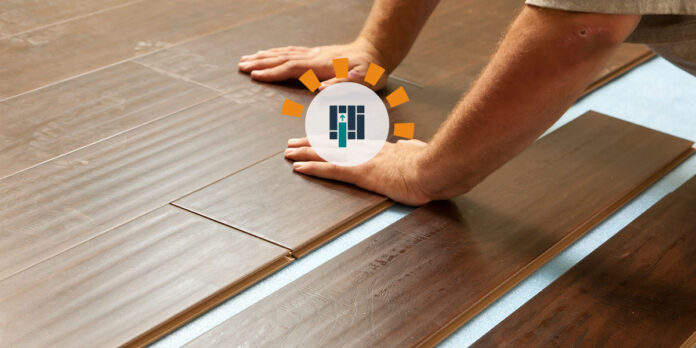Are you looking to update your home with lasting, stylish flooring? If so, then installing heat-transfer vinyl flooring is the perfect option! Vinyl is a great choice for modern homes because it looks amazing and is much easier to clean and maintain than traditional wood or stone. Plus, thanks to advancements in technology, the installation of vinyl has become simpler than ever before.
In this blog post, we’ll walk you through how to install heat-transfer vinyl flooring quickly and easily. So if you want beautiful floors that are easy on the wallet and require little maintenance, read on—we have just the guide for you!
Prepare the Area: Clear away any furniture and objects from the area to be tiled, then vacuum, mop, and dry the floor.
Before beginning any tiling project, it’s important to properly prepare the area. Start by clearing away any furniture or objects that may be in the way. This will not only provide you with more space to work but also minimize the risk of any damage to your belongings. Once the area is cleared, give it a good clean by vacuuming and mopping the floor.
This will ensure that the surface is free of any dirt or debris that could interfere with the adhesive bond between the tiles and the floor. Finally, make sure to dry the area thoroughly before beginning the tiling process. By following these steps, you’ll be setting yourself up for a successful tiling project that will last for years to come.
Measure and Cut Tiles: Measure your space and use a pair of scissors or a vinyl cutter to cut each tile to size.
Transform your space into a work of art with the perfect tiles! When it comes to tile installation, measuring and cutting are two major steps that require precision and attention to detail. Whether you’re looking to create a stunning backsplash or add some personality to your bathroom floors, custom-cut tiles can make all the difference.
With a pair of scissors or a vinyl cutter, you can create perfectly sized tiles that fit seamlessly into your space. So why settle for generic sizes and shapes when you can bring your vision to life? Get measuring and cutting today and take your tile game to the next level!
Trim and Seal Edges: Use a sharp blade to trim off any excess material around the edges of your flooring, then use an appropriate sealant to finish off the job.
When it comes to installing new flooring, trimming and sealing the edges can make all the difference in achieving a polished look. Utilizing a sharp blade to carefully trim away any excess material is the first step in ensuring a neat and precise finish.
However, the job isn’t quite complete without properly sealing the edges, which not only provides a professional appearance but also helps to protect the flooring from moisture and other potential damage. By investing the necessary time and effort into trimming and sealing the edges of your new flooring, you’ll be able to enjoy a beautiful and long-lasting result.
Clean Up: Pick up any scraps and sweep up dust before replacing furniture and enjoying your new vinyl floors!
Cleaning up your home can be a tedious chore, but it is important to make sure everything is spotless before enjoying your newly installed vinyl floors. One small scrap of debris could cause a scratch or blemish on the shiny surface, so it’s best to take the time to thoroughly sweep and pick up anything that might be left behind. With a little extra effort, you can ensure that your new floors stay looking their best for years to come. So roll up your sleeves, grab a dustpan, and get to work—your beautiful floors will thank you!
In conclusion, vinyl tile flooring is a great way to upgrade any space at a low cost and with minimal effort. Starting from the first steps of preparation with cleaning and measuring to the last step of trimming and sealing the edges, working with vinyl heat transfer can be a quick and easy job.
Finishing off by clearing away scraps and dust helps make the final product look even better. With each step taken carefully, your new vinyl surface should be set up in no time at all. So don’t delay; get started today on your upgrade project!
































